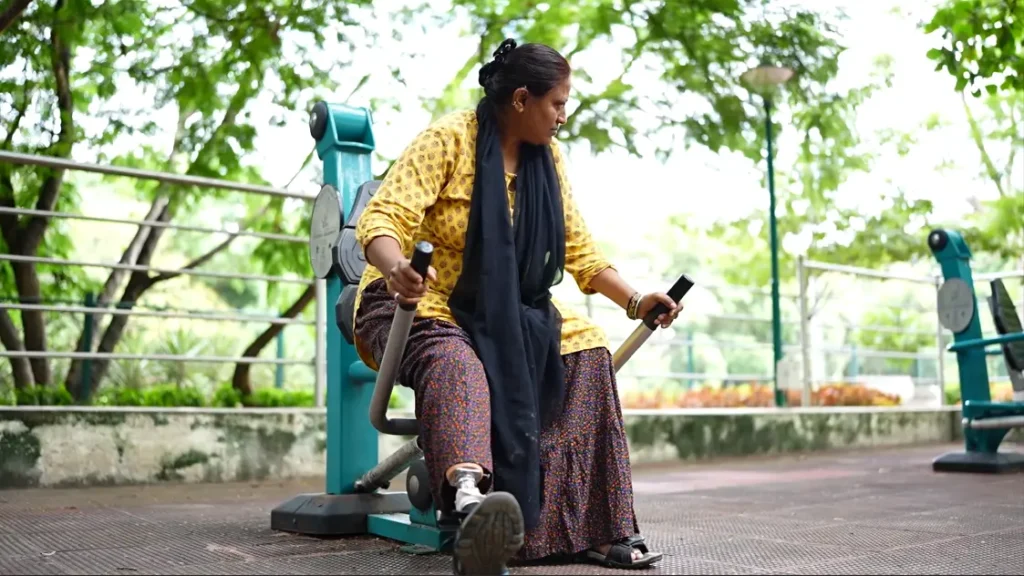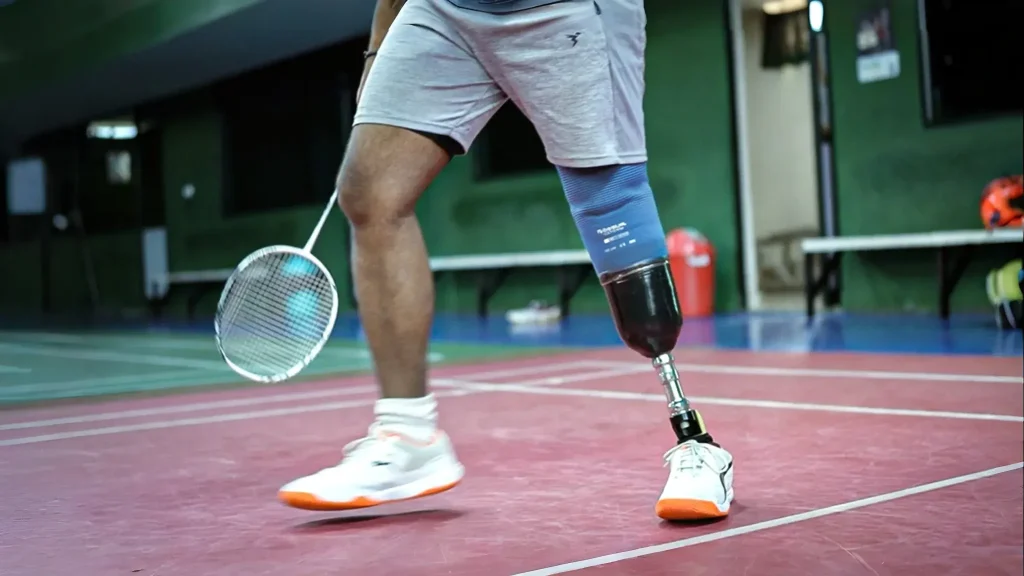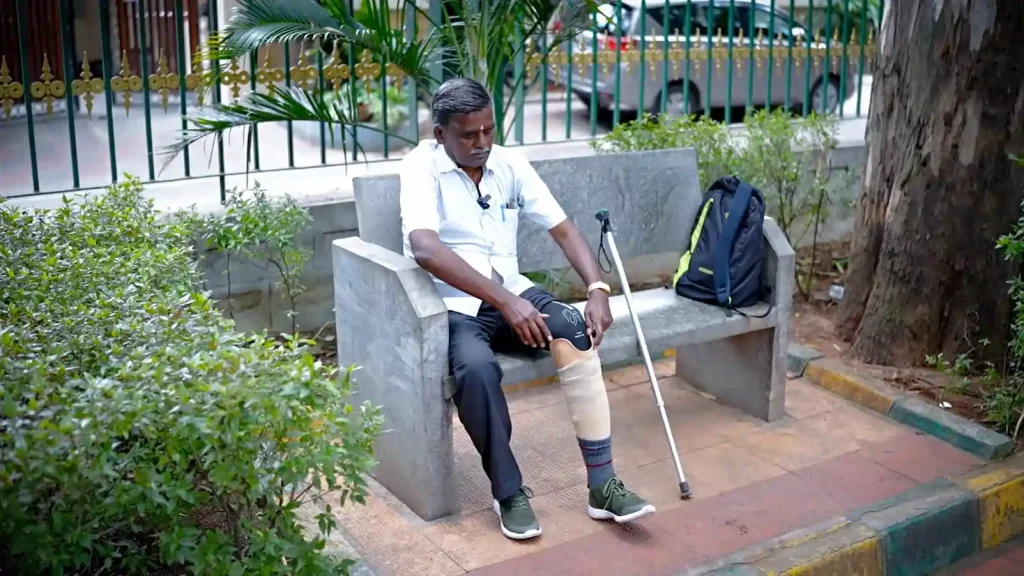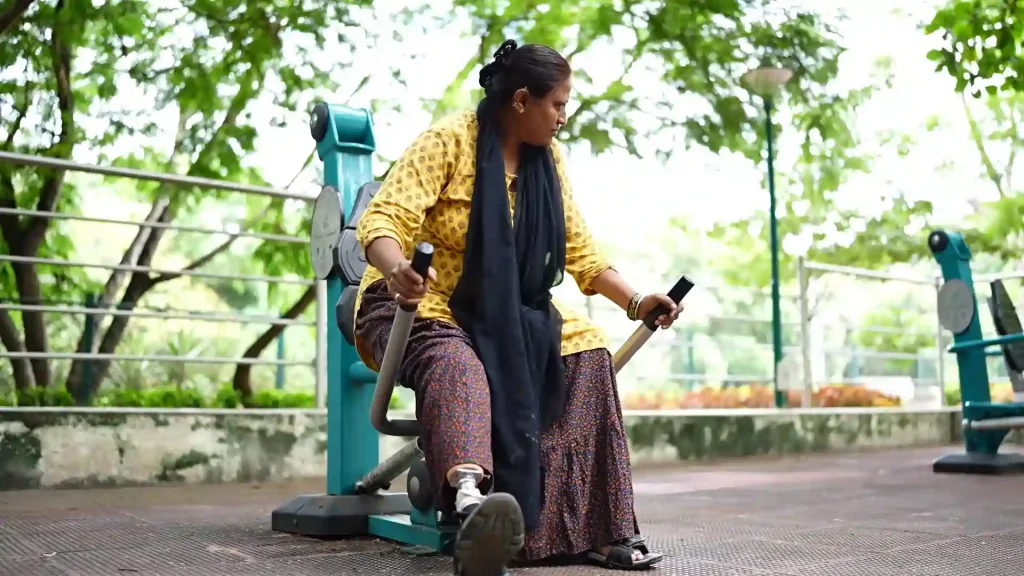
Wearing a below-knee prosthesis can be life-changing, but what if it starts causing pain instead of bringing comfort and freedom? If you’re feeling discomfort, irritation, or even sharp pain while using your prosthetic leg, you’re not alone. Many individuals experience these issues, especially during the first few weeks or when switching devices.
This blog is your complete guide to understanding why your below-knee prosthesis might be hurting and, more importantly, how to fix it.
What is Below Knee Amputation (BKA)?
A transtibial amputation, popularly called a below-knee amputation, is a procedure that removes the foot, ankle, and part of the lower leg bone through surgery. The surgery keeps the knee joint intact, differing from amputations higher up the leg.
Why Might Someone Need a Below-Knee Amputation?
Several common reasons can lead to the need for a BKA
- Problems due to Diabetes: Poor blood circulation or unhealing sores.
- Serious injuries, Such as those from accidents where the lower leg is severely damaged.
- Infections: BKA is the solution for an untreatable disease in the foot or leg.
- Vascular disease: The blood flow to the limb is reduced due to peripheral artery disease.
- Cancer: Cancerous tumour in the bone of the lower leg.
Why Preserving The Knee Matters
Preserving the knee joint in a BKA offers significant benefits:
- Better Use: The intact knees help to learn how to use a prosthetic leg more easily.
- More Energy Efficient: The intact natural knee saves energy while walking with a prosthetic limb compared to those with an above-knee amputation. You can move around easily for extended periods of time.
What Causes Pain in a Below-Knee Prosthesis (And How It’s Solved)
The prosthetics is designed to help you regain your mobility, not to cause you discomfort. Let’s analyse the common reasons for discomfort and the solutions that can help you find relief and comfort.
1. The Customised Fit: Addressing Individual Needs
The primary way a below-knee prosthesis fights discomfort is through its highly customised nature. Every residual limb is unique, and so is the prosthesis that accompanies it.
2. The Socket: Pressure Point Relief
- Pain Point: The most common source of discomfort in any prosthesis is a poorly fitting socket. This creates localised pressure, rubbing, blistering, and soreness on the residual limb.
- How it Solves It: The socket is the absolute cornerstone of comfort.
- Custom Molding: The socket is molded to fit the contours of your limb. Thus, ensuring even pressure distribution across a wide area, rather than bony spots.
- Weight Bearing: The prosthesis must effectively bear your body weight through the socket, thereby distributing stress evenly across all areas that should be loaded.
- Relief Areas: The socket design includes areas that help avoid pressure on nerves, blood vessels, or bony points that are particularly sensitive.
- Adaptation: The socket can be adjusted to accommodate changes in your growing limb or a new one, ensuring
- A comfortable fit. In this way it prevents new pain points from developing.
3. Suspension System: Eliminating Slippage
- Pain Point: A loosely fitted prosthesis moves up and down on your limb with each step or slips off entirely. This awkward situation creates friction, irritation, and blisters on the skin, as well as instability. This places strain on other joints.
- How it Solves It: The suspension method keeps your prosthesis securely in place, minimising unwanted movement.
- Suction & Active Vacuum: This creates a negative pressure environment to pull your limb into the socket. Therefore, virtually eliminates pistoning and provides an incredibly stable connection. This results in less friction and improved comfort.
- Pin-Locking Liners: The positive lock of the pin into the socket prevents vertical movement, ensuring the prosthesis remains in its exact position. The liner also provides a protective, cushioned layer between your skin and the socket.
- Sleeve & Supracondylar: These methods utilise anatomical features and external compression to secure the prosthesis, thereby reducing movement and friction and preventing skin breakdown and pain.
4. The Pylon (Shank): Balancing Support and Lightness
Pain Point: If the prosthesis is not correctly balanced, it can lead to fatigue, an uneven gait, and strain on your back, hips, and leg.
How It Solves It
- Lightweight Materials: Prosthesis made of high-quality carbon fibre, aluminium, and titanium provide strength and stability without adding weight. Thus, walking does not cost energy loss, reduces fatigue and muscle strain.
- Alignment: The pylon is vital for proper prosthetic alignment. A correctly aligned prosthesis ensures an even distribution of weight, preventing unnatural stress on your joints and muscles.
5. The Prosthetic Foot: Shock Absorption and Natural Movement
Pain Point: Stiffness and a jarring feeling while walking happens when the foot doesn’t properly interact with the ground. It leads to joint pain, discomfort from impacts, and an awkward gait.
How it Solves It: The foot is designed to imitate the complex functions of a natural foot:
- Shock Absorption: The feet can absorb the impact when the foot strikes the ground. Thus, protecting the natural joints and reducing pain in knees, hips, and spine areas.
- Mimics Natural Push-Off: The prosthetic feet enables smooth motion and energy-efficient stride. Therefore, it reduces stress on your residual limb and other joints.
- Energy Return: The carbon fibre feet store energy during the middle of your stride and release it at push-off, making walking easier. Therefore, addressing exhaustion from an inefficient gait.
- Adaptability to Surfaces: The prosthetic foot adapts to uneven terrain, provides stability and reduces discomfort.
A below-knee prosthesis redistributes forces, stabilises your limb, absorbs impact, and facilitates natural movement. Thus reducing the discomforts associated with prosthetic use.
Talk to the experts at KARE Prosthetics & Orthotics to find the perfect below-knee prosthesis tailored to your lifestyle and needs.
📞 Book a free consultation todaY
Choosing The Best Below Knee Prosthesis for Your Needs

There is no such thing as the best prosthesis. It is because there is no one-size-fits-all at all. Here are some things that may help you decide which prosthetic is right:
- Activity level: Are you a person who is more homebound? Are you shy about walking? Or are you a person who loves sports, running and jumping?
- Residual Limb: What does your remaining limb look like?
- Goals: What activities do you enjoy? Is it walking to work or playing with your children?
- Appearance: Do you prefer a natural-looking prosthetic or a more aesthetically pleasing design?
Therefore, a customised product that blends technology with individuals’ needs to help them achieve their personal best is the best prosthetic for you.
How to Recover From Below the Knee Amputation
Recovering from a below-knee amputation (BKA) is a process of healing and rediscovery in stages. It paves the way for renewed mobility with a below knee prosthesis.
1. Post Surgery Recovery
- Wound Healing: Always keep the wound clean and safe to prevent infection and promote healing.
- Pain Management: Your clinical team takes care of discomfort during this phase.
- Swelling Reduction: The care team minimise the swelling and prepares your residual limb for the prosthetic.
2. Getting Ready for Your Prosthesis
Once your wound has healed, the next phase prepares your body for a prosthesis
- Conditioning: Desensitisation helps your limb get used to touch and pressure.
- Exercises: These help in balance and moving with a prosthetic.
- Maintaining Knee Movement: Since your BKA preserved your knee joint, keeping it flexible and strong is extremely important
3. Prosthesis Fitting
- Preparatory Prosthesis: You’ll typically get a temporary, “preparatory” prosthesis first. It allows you to start walking and helps your limb change shape before a final, more custom leg is ready.
- Definitive Prosthesis: Once your limb has stabilised, you can fit with your permanent, highly customised “definitive” prosthesis.
4. Learning to Live with Your Prosthesis
Once you have your prosthesis, you need to use it confidently:
- Donning and Doffing: You’ll learn to wear and take off the leg.
- Balance and weight shifting: Learn balancing and shifting your weight.
- Gait Training: Walk efficiently with your new leg with natural and smooth walking patterns.
- Overcoming Obstacles: You learn to walk on different surfaces, climb stairs, and face routine challenges confidently.
The KARE healthcare team is behind you, helping to build your confidence and encouraging you to get back to an active life.
What Affects Below Knee Prosthetic Leg Prices in India?
The prices of below-knee prosthetic legs in India vary due to various factors. Each leg is custom-made and features unique characteristics.
1. Type of Parts:
- Simple vs. Advanced Feet: Barefoot shoes (like the SACH foot) are cost-effective. However, the price will be higher if you want a foot that stores energy to help you walk or run better or one that adjusts to uneven ground (like carbon fibre or multi-axis feet).
- Suspension System: The method by which the leg attaches to your body (suction, pin-lock, elevated vacuum) also affects the cost. More advanced, comfortable, and secure systems usually cost more.
- Materials: Lightweight carbon fibre prosthetics are more expensive than those made of plastic.
- Customisation: Every prosthetic leg is customised to fit each limb’s requirements. The more specialised fitting ones cost more.
2. Technology Level:
- Basic Mechanical: These are simpler parts that work with low-activity components. They are more budget-friendly.
- Microprocessor-Controlled: These “smart” parts utilise tiny computers and sensors to adjust in real-time as you walk, offering excellent stability and a natural feel. But they are more expensive.
- Rehabilitation Services: The cost often includes rehabilitation expenses to use your new leg; which is essential for success.
- Brand image and Provider: Products purchased from reputable brands and clinics are of high quality and advanced, often accompanied by a higher price tag.
What is the Cost of a Below-Knee Prosthetic Leg in India?
Entry-Level Options
- Price Range: ₹25,000 – ₹60,000
- Features: Basic design with minimal features
- Best For: Everyday walking, light activities, and users with limited mobility needs
Mid-Range Options
- Price Range: ₹60,000 – ₹1,20,000
- Features: Includes advanced components like carbon fibre, better comfort and durability
- Best For: Moderate daily use and users looking for improved functionality
High-End Options
- Price Range: ₹1,00,000 – ₹3,00,000 or even ₹10,00,000+
- Features: Microprocessor-controlled, highly customised for performance and stability
- Best For: Active users, athletes, or those needing enhanced adaptability and real-time control
Conclusion
You do not have to compromise on discomfort, pain and stability issues from a below-knee prosthesis. Problems such as pressure at the socket, an ill-fitting liner, or outdated components can be solved with the perfectly aligned prosthesis, which becomes an extension of your body.
Therefore, with a clear understanding of the options available and expert guidance, you can get the best out of your below knee prosthetic leg.
Book a consultation today and take the next step toward pain-free mobility.





